Incogni vs. Optery comparison [2025 review & explanation]
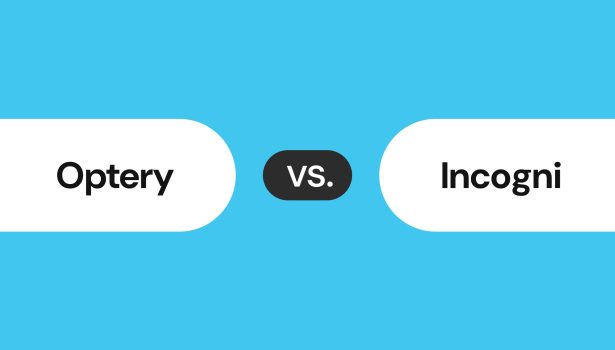
Incogni and Optery both remove personal information from data broker websites but there are major differences in how they operate and report removal progress. If your goal is to remove your personal information from more people-search sites and improve your online privacy, go for Optery. If your concern is removing your data from marketing databases, Incogni might be a better choice as it provides better coverage of non-public data brokers than Optery’s plan for the same price. As for giving visibility on your current exposure, Optery uses links and screenshots while Incogni doesn’t show what profiles they’ve found and removed. Both services allow you to track removal progress in interactive dashboards.
Incogni overview
Incogni promises to remove personal information from over 200 data broker sites, focusing on brokers that don’t have publicly open databases along with around 60 people-search sites. The service seems to scan the people-search sites to find user records but it can’t scan other data brokers on its list since they don’t have openly available catalogs. Still, Incogni sends users’ personal information to those websites for removal without being able to first check whether a broker even has it and then confirm it’s erased.
Incogni’s dashboard and reports allow you to track removal progress and remaining exposure in numbers and statuses. However, they don’t provide links to the data broker pages with your information or the details they found exposed. The service also emails weekly reports.
Optery overview
Optery focuses primarily on people-search sites along with a couple of non-public brokers, but the actual number of sites covered depends on the plan you select, ranging from 90 to 600+. Optery’s technology is quite different from Incogni’s as the service autogenerates links to pages on people-search sites where your information is likely to be exposed, then scans those pages for your data and takes screenshots if it’s found. Both links and screenshots are added to the user dashboard and reports. As for non-public data brokers, Optery can’t scan them either but sends removal requests along with users’ sensitive data nevertheless.
To track progress, Optery provides a dashboard with removal statuses for each broker it covers and regular detailed reports – starting with the Exposure Report after your first scan and shifting to Removals Reports once your subscription is active.
Incogni vs. Optery: summary
| Incogni | Optery | |
|---|---|---|
| Sends customer data to brokers without first confirming they have it | Yes | Yes |
| Number of data brokers covered | Around 200 | Free Basic: 0 Core: 90+ Extended: 245+ Ultimate: 365+ (and 610+ with Expanded Reach) |
| Types of data brokers covered | Primarily non-public data brokers, some people-search sites | Primarily people-search sites, some non-public data brokers |
| Provides links to pages with exposed data | No | Yes |
| Opt-out process | Automated (but you may have to respond to brokers’ emails) | Automated (with manual assistance on Extended and Ultimate plans) |
| Reports | Weekly email reports | Initial Exposure Report, then Removals Report quarterly for Extended and Ultimate users |
| Free trial | No | No |
| Free scan | No | Yes |
| Plans | Individual Family & Friends (up to 5 people) | Individual Discounts for added friends & family members |
Detailed comparison of Incogni vs. Optery
Data broker coverage
Incogni’s list of 200+ sites consists primarily of data brokers that don’t have publicly available databases, which the service groups into marketing, recruitment, and risk mitigation data brokers. Incogni also covers around 60 people-search websites but it misses a couple of major ones like Whitepages, Radaris, and Spokeo. Additionally, their list includes a few overseas data brokers that don’t hold information about US citizens.
Optery’s data broker coverage depends on which plan you subscribe to:
- Free Basic: Performs a scan on 366+ sites but no removals
- Core: 90+ data brokers
- Extended: 245+ data brokers
- Ultimate without Expanded Reach: 365+ data brokers
- Ultimate with Expanded Reach (includes sites that don’t meet Optery’s data removal verification process): 610+ data brokers
Based on our observations, Optery appears to focus primarily on people-search sites, though major ones like Whitepages, ClustrMaps, and USPhoneBook are available only on the most expensive plan. Optery also covers non-public data brokers, though not as many as Incogni (except for its Expanded Reach).
Data removal process
Incogni seems to scan some people-search websites to find exposed users’ records, but it can’t scan the majority of sites on its list since they don’t have publicly open databases. Incogni sends removal requests nevertheless.
Optery, on the other hand, guesses where your profiles are located: it autogenerates links to data broker pages where your information is likely to be exposed. Then, it scans those URLs and checks if your information is indeed there. As for non-public data brokers, Optery can’t scan them either, but still sends removal requests.
We believe the practice of sending data removal requests to every other broker is the opposite of what a privacy protection service should do because:
- Since there’s no way to scan these sites, there’s no way to check if they even hold your personal information and if they have actually removed it after a request.
- Submitting a removal request to non-public brokers typically requires sending them the data you want opted out or removed – it is used to find you in their databases and suppress the correct records. Sending your personal information to sites without knowing if they already have it puts you at risk of exposing it to those that never did.
- Though most data brokers will honor removal requests, some unethical sites could use your personal information to enrich their databases. Since they can’t be scanned, there’s simply no way to verify and guarantee your information is deleted.
Additionally, non-public data brokers usually have several removal options, the most common being opting out of the sale/ sharing of your data, limiting the use of your sensitive information, and deletion of your personal info. The first two don’t erase your data from brokers’ databases but restrict how it’s used and who it’s shared with. Removal, in turn, sometimes requires passing identity verification that no service can pass for you – answering personal questions like what bank gave your loan, the color of your car, etc. Optery and Incogni don’t specify what kind of removal request they send to each non-public data broker and whether they’re able to delete your information from their databases completely.
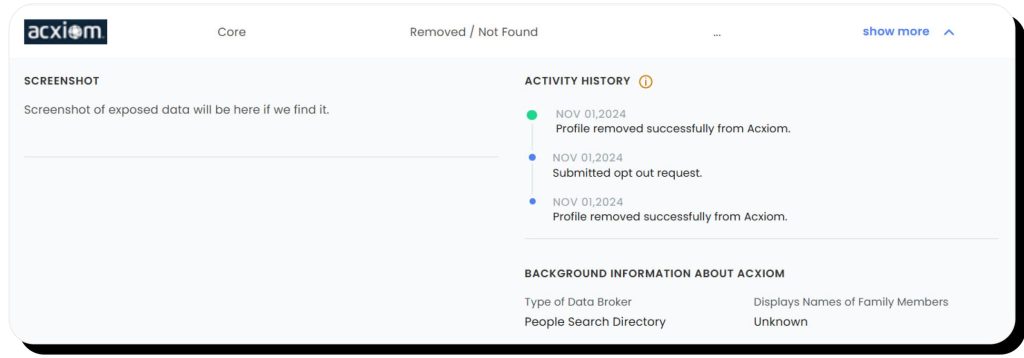
After submitting removal requests, Incogni relies on data brokers to confirm data removal. While the service handles sending requests on your behalf, you might have to respond to verification emails from data brokers and confirm the removals.
Optery is fully automated and doesn’t require any actions from users. However, it’s unclear whether they verify removals themselves or rather rely on data brokers’ confirmations as we found numerous profiles still exposed on people-search sites after Optery reported them as removed.
Both services allow tracking removal progress in their dashboards.
Reporting
Incogni’s dashboard allows tracking what data brokers the requests have been sent to and which ones have been completed. However, the service doesn’t provide links or personal details found on people-search sites, so there’s not much transparency about what profiles are deleted.
The service also emails weekly progress reports that list the number of requests completed, in progress, and sent.
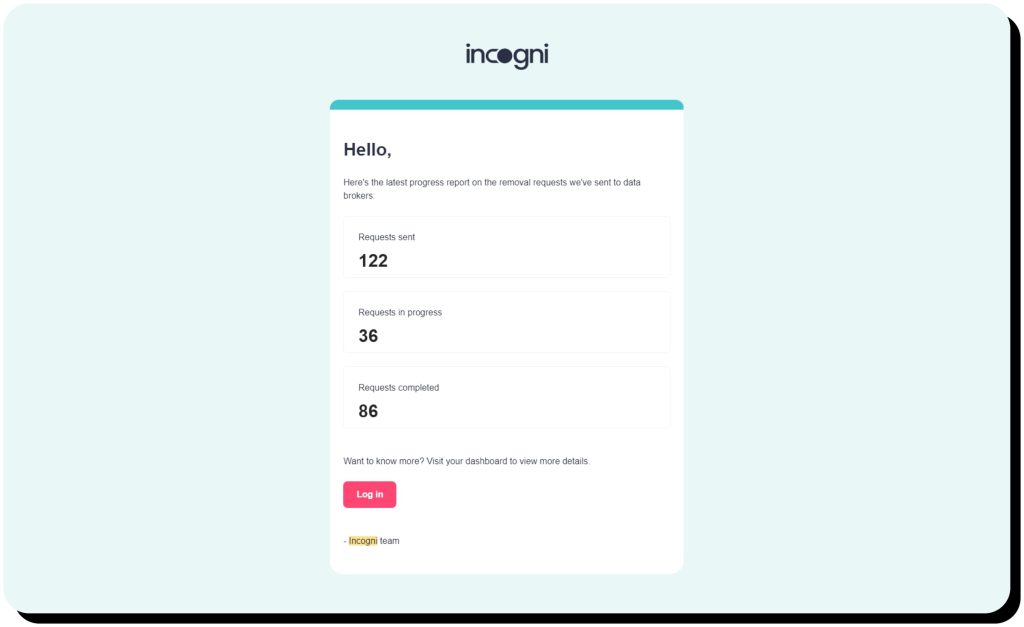
Optery likewise allows tracking removal progress in its dashboard. Unlike Incogni, the service adds autogenerated links for most people-search sites and screenshots if your info is found via those links. However, since autogenerated links are added to most sites regardless of whether they lead to your profiles, it can be challenging to assess your actual exposure.
Additionally, Optery combines two removal statuses into one – “Removed/ Not found.” That means that the sites your information was removed from are grouped together with those your information never existed on. While Optery states that they do this to simplify reporting and tracking, in our experience, it greatly overstated the actual removal progress and exaggerated the work done by Optery: out of 97 people-search websites, over 50 never had our data in the first place and only around 40 had our profiles actually removed. What’s more, many of those 50 websites had “Profile has been successfully removed” in their activity history.

All new Optery users (including those on the Free plan) receive an initial Exposure Report – a PDF file that lists the sites where your personal information has been found with links and screenshots. Unlike the dashboard, the report presents only the sites that actually expose your data, so we found it more reliable and valuable than the dashboard.
Extended and Ultimate plan customers also receive quarterly Removals Reports that feature before and after screenshots.
Removal quality
As for data broker sites that don’t have openly available catalogs, it’s challenging to evaluate what information is removed and how successfully. Notably, we did receive some emails from the brokers Incogni covers when we tested the product, so we know that removal requests were sent out.
As for people-search sites, Incogni users need to look themselves up if they want to verify their information is truly gone as there are no links or screenshots to rely on.
Optery did remove our data from a number of people-search sites. However, there were many false positives as well – profiles marked as removed though they were still exposed.
Optery Ultimate plan customers can additionally request custom removals – if you find your information on a data broker not covered by Optery, you can submit it to the service and they’ll handle it for you (available after 30 days of subscription).
Continuous monitoring
Since data brokers often update their databases and publish new profiles, continuous monitoring is crucial to ensure your personal information doesn’t reappear.
For that, Incogni regularly resubmits removal requests. Optery runs automated scans and resubmits opt-out requests once every 30 days.
User interface
Incogni dashboard features three screens.
1) The main dashboard that lists:
- The number of data deletion requests sent, in progress, and completed alongside an interactive chart (you can toggle between monthly stats and the total number of requests since sign-up)
- How much time has been saved
- The number of suppression list entries (data brokers that will no longer collect and share your info)
- Activity log summary
2) A full activity log that breaks down opt-out activity organized by date
3) Detailed view:
- A list of all data brokers in a sortable table with key details (compliance score, severity score, requests sent, request status). You can toggle between a list of private and public databases
- Detailed data broker information including:
- Request status
- Last request sent date
- Last request completed date
- Average resolution time
- Upcoming requests (if applicable)
- Data broker information
- Associated risks
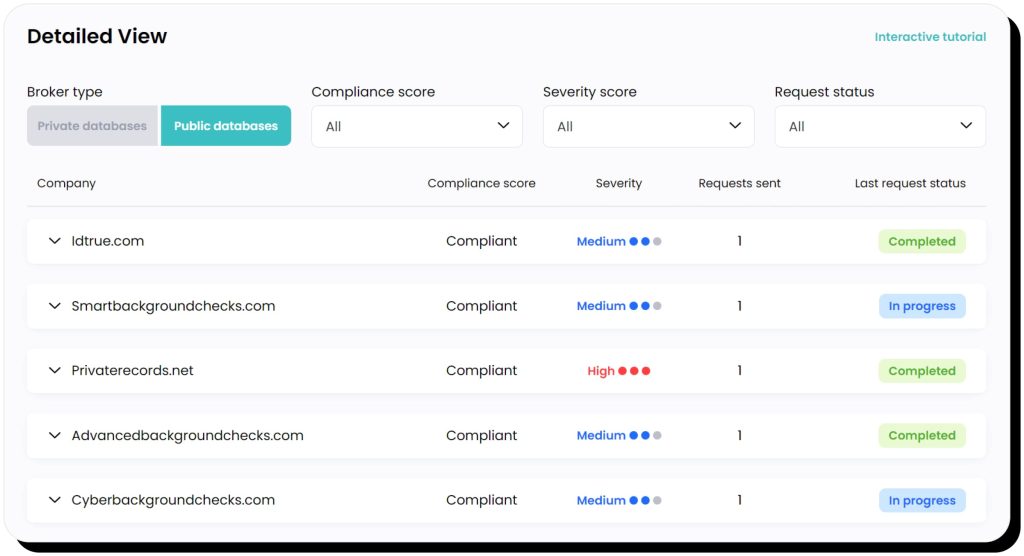
Optery’s main dashboard is divided into multiple sections.
Data brokers visibility and removals summary:
- How many data brokers are covered by your plan
- Exposure chart that displays the percentage of matched profiles found versus not found/search in progress
- Protection progress and status: The number of data profiles removed/not found, removals in progress, removals pending
Primary scan tab:
- Found profiles screenshots
- Data brokers results and Google search results for your name (depicting people-search sites among results)
- Number of matches found
Custom scan tab where you can buy a custom scan, which generates a new Exposure Report
A searchable, sortable table of websites that expose private data:
- Data broker sites
- What plan covers them
- Exposure risk
- Link to profile (where available)
- Additional information (screenshots, additional links, activity history, data broker background information)
Optery’s sidebar includes additional tools:
- Custom removal requests
- Reports (both Exposure and Removals reports)
- Removals issues: If you find an issue with removal, such as your profile still existing on a data broker site after Optery reported it removed, you can report it to the Optery team here
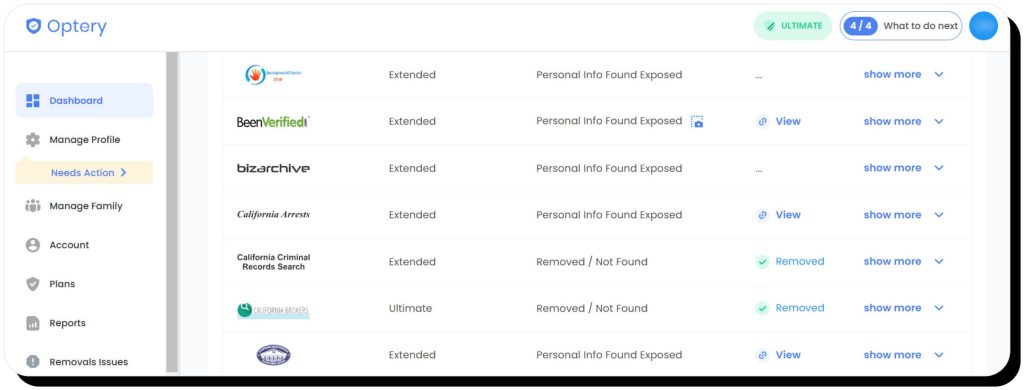
Which has better customer support?
Incogni’s customer support options include a knowledge base, contact form, and email. It doesn’t offer phone or chat support. We reached out to Incogni’s support and received a reply in about five hours.
Optery’s support options include a help desk, email, live chat, and social media. Support is available 24/7 and you can check expected response times before reaching out. Ultimate plan users get priority support. We reached out on a free account and received a response within 90 minutes.
Customer reviews
At the time of this writing, Optery has a 4.2-star rating (out of 5) on Trustpilot based on 61 reviews and a 4.8-star A- rating on the Better Business Bureau. Incogni has a 4.4-star Trustpilot rating based on 816 reviews.
Trustpilot reviewers say Optery helps reduce their digital footprint and removes them from sites they didn’t know existed. However, some Optery reviews aren’t as flattering, with users stating that the service:
- Does the bare minimum
- Aggressively upsells
- Is a rip off or scam
Similarly, has its fair share of both admirers and unsatisfied customers Incogni. Some praise the service for reducing spam calls and emails and saves time with data broker removals. Others state that the service:
- Hasn’t removed them from Google search results
- Overpromises and underdelivers
- Is a waste of money
We recommend reading reviews yourself to evaluate the issues you find most critical and make an informed decision before choosing any data removal service.
Security measures and privacy policies
Both Incogni and Optery state they don’t sell customer information to third parties, and they only collect the details required to request data removal, so they take measures to maintain data security – though as we’ve pointed out, they can still share identifying information with data brokers that don’t already have it when sending removal requests.
Incogni and Optery also offer optional multi-factor authentication (you can enable this feature in their respective dashboards) to help protect user privacy. Both services also have a relatively transparent privacy policy.
Optery has some additional data security features, as it’s SOC II Type II certified and uses dummy email addresses by default to help prevent data brokers from getting your contact information (though you can disable that feature in the dashboard).
Pricing and plans
| Plan | Incogni | Optery |
|---|---|---|
| Individual monthly | $14.98 | Core: $3.99/mo. Extended: $14.99/mo. Ultimate: $24.99/mo. |
| Individual yearly | $89.88 | Core: $39/mo. Extended: $149/mo. Ultimate: $249/mo. |
| Family monthly | $32.98 | 20% discount on 2 paid plans 25% discount on 3 paid plans 30% discount on 4+ paid plans |
| Family yearly | $197.88 | Same discounts as on Family monthly |
All Incogni plans cover its full list of around 200 sites, and the service allows adding multiple surnames plus up to three addresses, phone numbers, and email addresses per user (to be used for scans on data brokers).
Optery’s coverage is dependent on which subscription option you choose. The Free Basic plan scans all the sites Optery covers and generates an Exposure Report. The Core plan covers 85+ sites but only allows one name, city, and state variation per user. Optery’s Extended Plan includes 240+ sites and unlimited name, city, and state variations. The Ultimate plan covers 365+ sites (and 605+ with Expanded Reach enabled). Extended and Ultimate customers also get a human “privacy agent” for quality assurance and Removals Reports with before and after screenshots
Note that on all subscription plans, Optery can only scan for one email address and phone number at a time – you can’t simultaneously scan for multiple email addresses or phone numbers.
Both Incogni and Optery have a 30-day money-back guarantee.
Optery and Incogni: which personal data removal service works better?
Both Optery and Incogni remove data from data broker websites, so they’re legit services that can contribute to minimizing the exposure of your sensitive information online. At the same time, both services can expose your data to new sites as they send removal requests along with your personal details to private databases they can’t scan and confirm removal from.
Other than the number of brokers covered, the biggest difference is that Optery provides better visualization of your exposure on people-search sites with links and screenshots where available. Though they aren’t always accurate, these at least offer some clarity into what profiles are found and removed. In addition, Optery offers a custom removal service for Ultimate plan subscribers (with unlimited custom requests).
FAQ
What is the difference between Incogni and Optery?
Optery covers more people-search sites though the actual number depends on the plan you choose. Still, Incogni’s Individual plan covers fewer people-search sites than Optery’s plan for the same price. On the other hand, all Incogni plans cover the same number of data brokers – around 200 – while Optery’s coverage greatly depends on the plan you select, ranging from 80+ to 605+. Additionally, Optery provides links to data broker profiles and screenshots for transparency while Incogni doesn’t.
Does Optery sell your data?
No, Optery states it does not sell customer data to third parties. However, they submit user information to data broker sites they can’t scan and verify removal from, which may result in your data being exposed to websites that never had it.
What is better than Optery?
Finding a better data removal service than Optery depends on what your privacy concerns and goals are. If you want to reduce your online exposure and improve your privacy, choose a service like Onerep that focuses on people-search sites and doesn’t send user data to brokers it can’t scan and verify removal from. If you want your data removed from a bigger number of marketing databases, Incogni might be a good choice as it covers more data brokers than Optery’s plan for the same monthly price. Additionally, Optery seems to rely on data brokers when confirming opt-outs as it sometimes reports removal even though profiles still exist. So, look for personal data removal services that don’t rely on brokers’ replies but rescan them instead - which is what Onerep does.
How long does it take for Optery to work?
Once you sign up for a paid account, the service begins processing some data broker removals within 24 hours. From our experience, Optery sends removal requests in bulk and having all opt-outs requested can take several weeks and even months. Notably, not everything depends on Optery as data broker sites take different times to process requests, some honoring them only after receiving several.


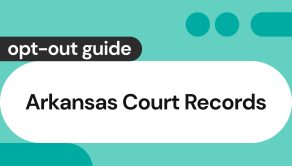


With over 8 years of experience in the field, the Onerep editorial team has deep expertise in data brokers, privacy violations, and fraud prevention. Through extensive research and conversations with customers, we’ve gained key insights into prevalent scams, data protection challenges, and common concerns around data exposure.